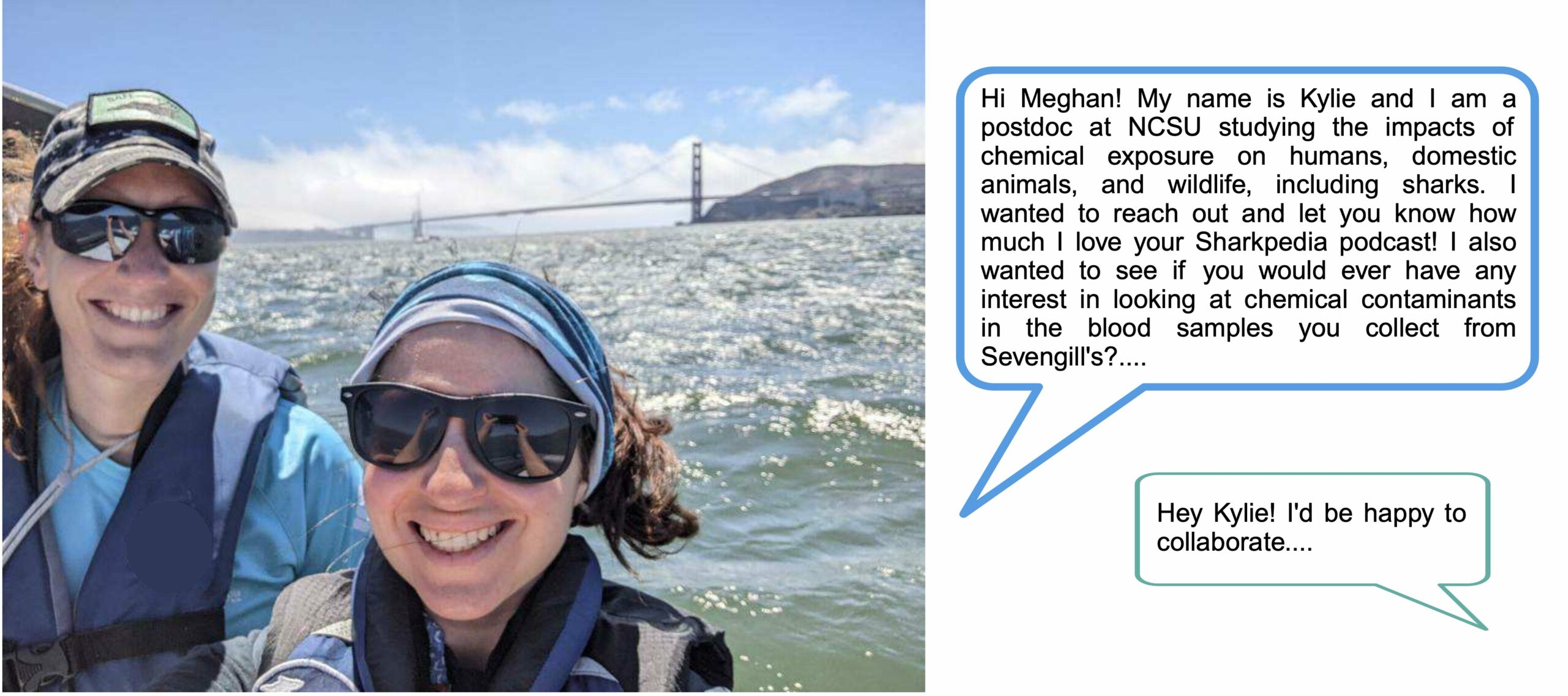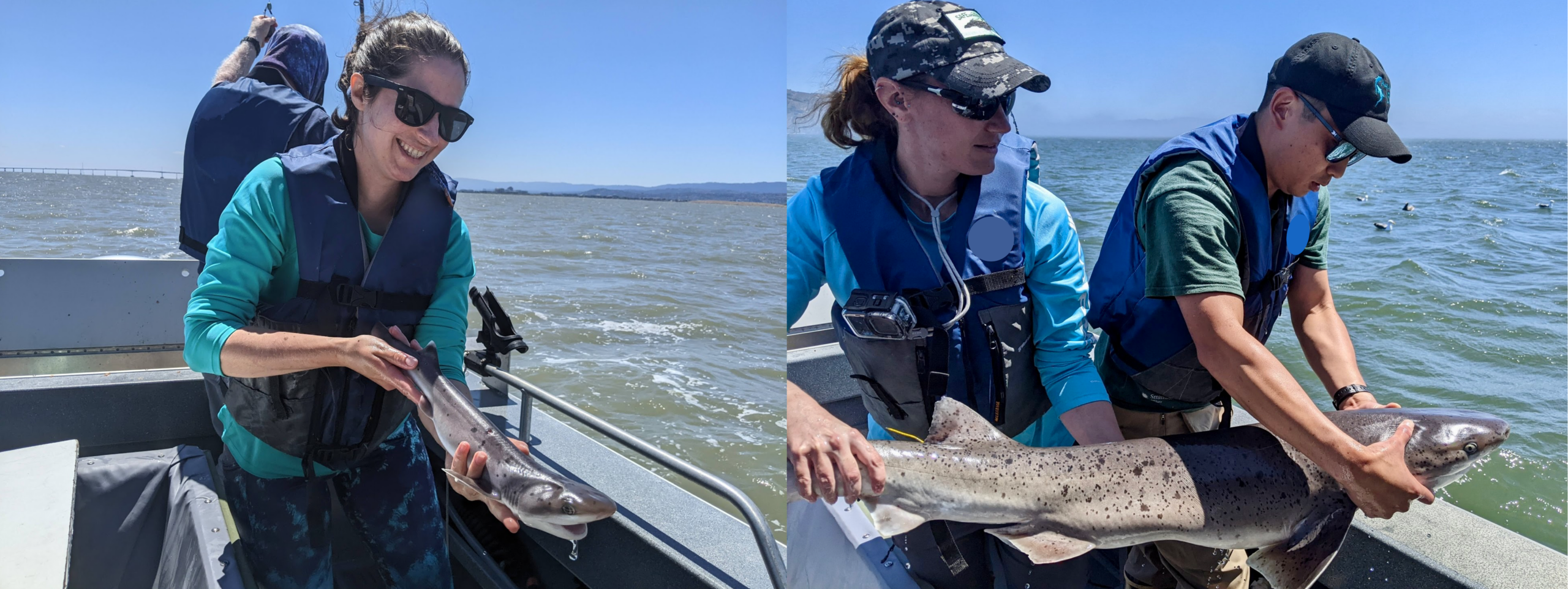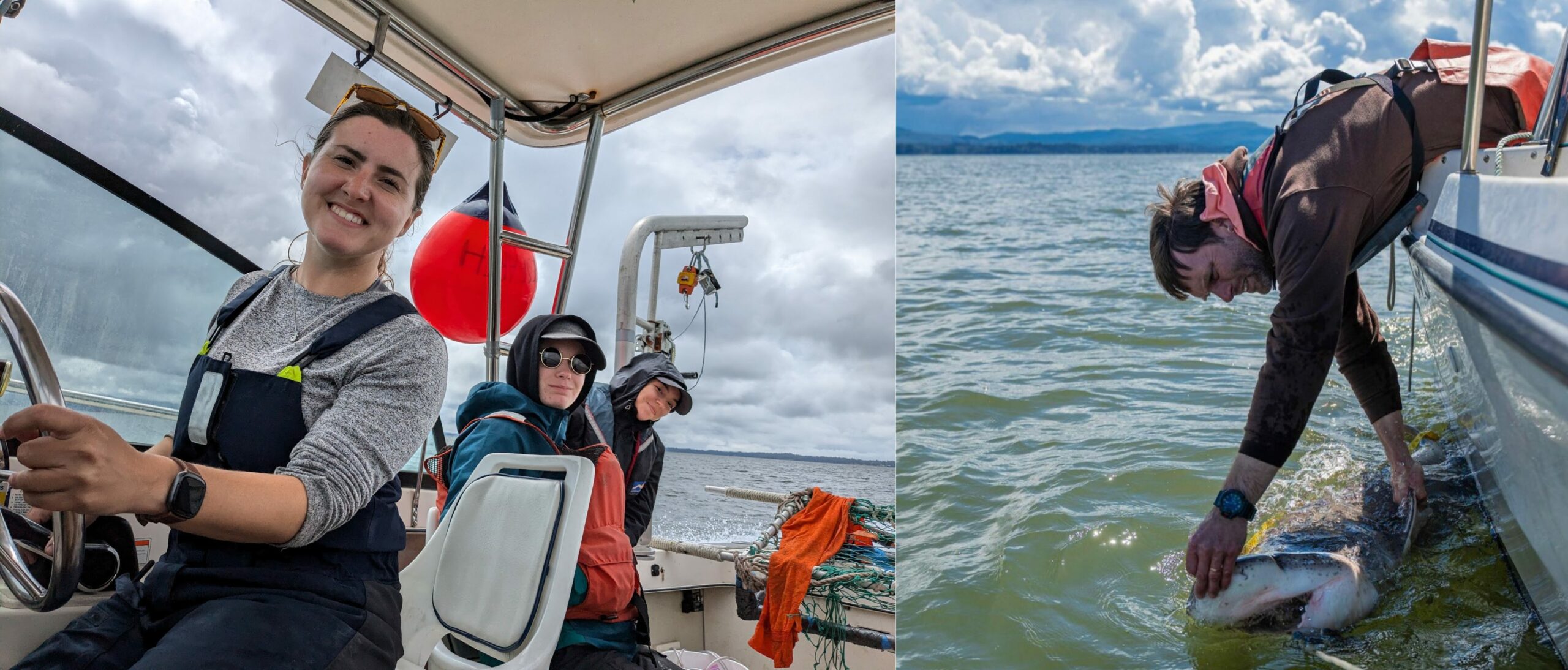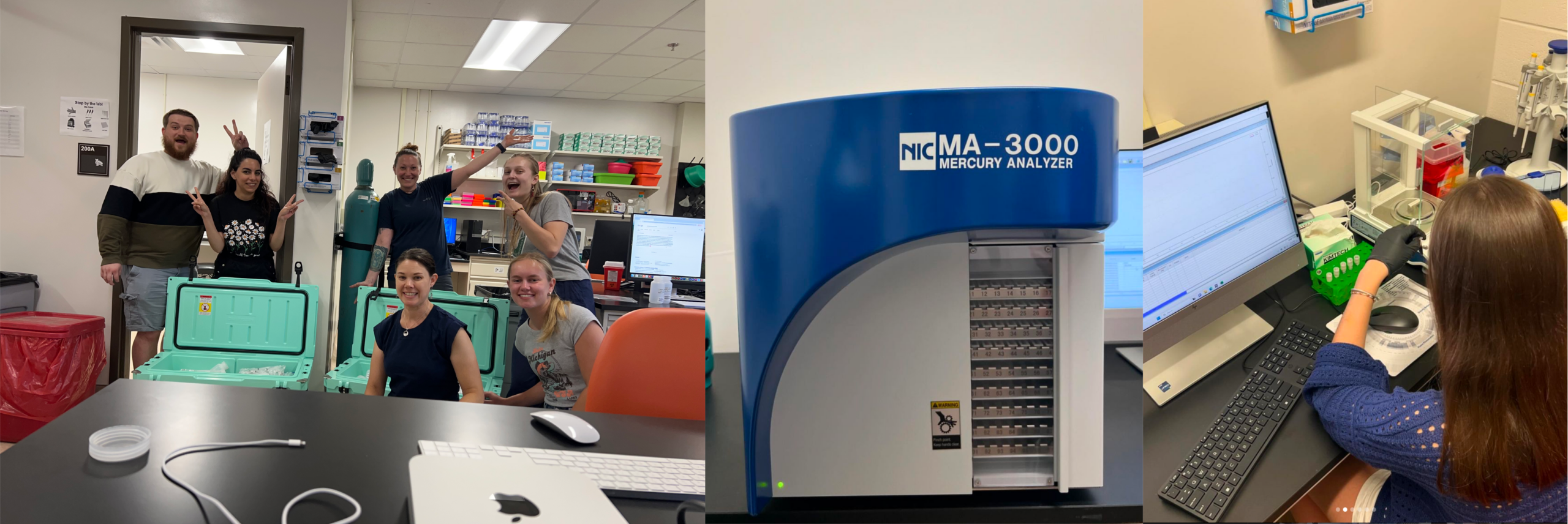Cross-Country Collaborators Characterise How Chemical Contamination Compromise’s Chondrichthyan Conservation
In August 2022, I traveled to San Francisco to meet up with shark scientist Dr. Meghan Holst and tag along with her on one of her field sampling trips. At the time Dr. Holst was a graduate student at the University of California, Davis (UC Davis) and I was a postdoc at North Carolina State University. What began as a casual conversation about how much I enjoyed Meghan’s podcast, Sharkpedia, turned out to be the start of an exciting collaboration between two early career scientists with a shared passion for shark conservation. Bringing together our complementary expertise in shark biology and toxicology we devised a plan to investigate chemical pollutant exposure as a potential risk factor threatening the health and survival of Broadnose Sevengill sharks (Notorynchus cepedianus) inhabiting San Francisco Bay, CA.

(Left) Drs. Kylie Rock and Meghan Holst in front of the San Francisco Bridge during our first sampling trip together. Photo © Meghan Holst. (Right) Text from the initial conversations that started this collaboration.
Our initial investigations sought to measure concentrations of pollutants in Sevengill sharks across life-stages, with San Francisco Bay serving as a prime location to sample from resident juvenile animals and seasonally transient adults. Dr. Holst served as the lead investigator catching sharks, assessing their body condition, running blood chemistry panels, and collecting blood samples that were then shipped to North Carolina where I analysed them for mercury, a common and abundant marine contaminant. From this early pilot study, we found that even young sharks have relatively high concentrations of mercury in their blood, raising concerns for their health and survival.

(Left) Dr. Holst preparing to release a Sevengill pup. (Right) Dr. Rock helping to release a Sevengill subadult with Dr. Holst’s research team. Photos © Meghan Holst
Since 2022, our collaboration has expanded. By teaming up with Dr. Taylor Chapple and his team in the Big Fish lab at Oregon State University (OSU), we designed a more comprehensive study to assess how coastal urbanisation impacts pollution of estuaries and accumulation of chemicals in both Sevengill and Tope (Galeorhinus galeus) sharks. With funding support from the Save Our Seas Foundation we are actively collecting environmental samples, including water and sediment, as well as blood and tissue samples from sharks in San Francisco Bay, an estuary featuring a highly urbanised coastline, and Willapa Bay, WA, which lacks urbanisation along its coast.

(Left) Graduate student Jessica Schulte and members of the Big Fish Lab research team headed out to collect samples in Willapa Bay. Photo © Meghan Holst (Right) Dr. Taylor Chapple working up an adult Sevengill alongside their research vessel. Photo © Jessica Schulte
In May 2024, my lab gathered together to prepare all of the supplies needed for sample collection for the 2024 sampling season to ship to Dr. Holst at UC Davis and Dr. Taylor Chapple and his graduate student Jessica Schulte at OSU. Dr. Holst, Dr. Chapple, and Jessica have been very busy this spring, summer, and fall collecting samples which will be shipped back to my lab at Clemson University for chemical analysis. This project and collaboration has been one of the most exciting and valuable parts of my scientific career and has taught me: 1) the value of interdisciplinary research projects for both the project leaders and their trainees, 2) not to be afraid of rejection, take that risk and reach out to other scientists with similar interests that you think you would work well with even if you are in different fields, and 3) how rewarding it is to pursue projects you are truly passionate about.

(Left) Dr. Rock and members of the Repro-Eco Tox Lab at Clemson University after hours of preparing sampling kits and packing them into coolers to ship to UC Davis and OSU. (Right) Chemical analysis of environmental, blood, and tissues samples at Clemson University. Photos © Paige Powell
